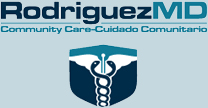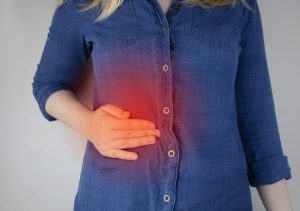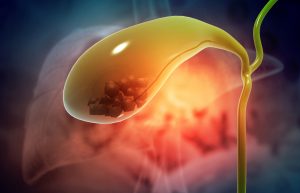Signs of Gallbladder Disease
People generally don’t give much thought to their gallbladder until they begin to have problems with it. Many don’t know what the gallbladder does, other than it has something to do with digestion. Gallbladder issues affect approximately 15 percent of the U.S. population and often require medical treatment. Those at risk for gallbladder disease include people over age 40 who are overweight. Women are twice as likely as men to have problems. People with diabetes and those with a family history of gallbladder disease are also at higher risk.
What is the function of the gallbladder?
The gallbladder is a small organ located in the upper right of the abdomen, under the liver. The liver produces a liquid called bile, which is stored in the gallbladder. The stomach signals the gallbladder to release bile into the small intestine to help break down fats. Bile is released through a series of tubes called bile ducts.
Two Common Gallbladder Problems
- Gallstones – These are bits of crystallized bile that can develop in the gallbladder. They may cause no symptoms at all, or they can cause pain, inflammation, and nausea.
- Cholecystitis – This is inflammation of the gallbladder, often caused by a gallstone blocking a bile duct.
Symptoms of a Gallbladder Attack
- Abdominal pain in the upper right side, under the rib cage. Pain can last several hours and may even be mistaken for a heart attack.
- Nausea or vomiting
- Fever and chills
- Light-colored stools
- Brownish urine
- Yellowing of the skin or whites of the eyes (jaundice)
Treatment Options for Gallstones
- Medication for pain
- Antibiotics to treat infection
- Medication to break down the stones
- Lithotripsy – Non-surgical procedure using shock waves to break gallstones into pieces small enough to pass
- Surgery to remove gallbladder. This can be done laparoscopically in a minimally invasive procedure.
Ways to Prevent Gallbladder Disease
- Maintain a healthy weight through diet and exercise. Obesity increases the risk factor.
- Eat foods high in fiber including whole grains.
- Eat fresh fruits and vegetables.
- Eat more foods that are low in refined sugars.
- Avoid foods high in fats. Choose low fat dairy and lean meats, fish, and poultry.
- Avoid very low calorie diets and rapid weight loss.
- Get regular exercise.
Next Steps
The physicians at RMD Primary Care are happy to answer your questions about gallbladder disease. If it’s been a while since your last physical, it may be time to see one of our doctors for a checkup. Contact us today to schedule an appointment.







